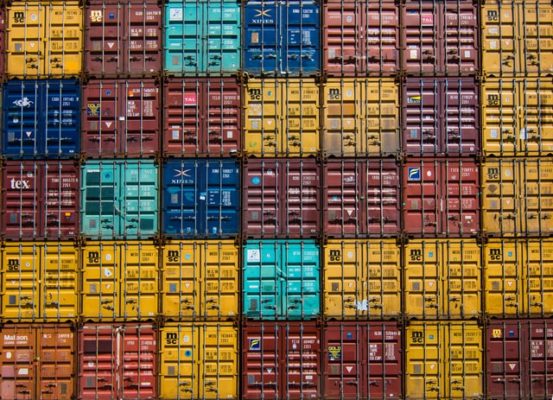It doesn’t matter whether you are just starting out, or whether you are an established seller, working out what to sell on Amazon can be a challenge. There are over 350 million products for sale on Amazon worldwide, and the majority of these products are sold by third party sellers – people like you and me.

Competition between sellers has never been higher, and this is why so many sellers are constantly looking for new products to offer for sale on Amazon. Here at SourceMogul, we’ve dedicated the past 7 years to helping Amazon sellers find profitable products with our award winning software, and we know how difficult this can be. So, we’ve completed a list of hints and tips that can help you to identify a profitable product, and how to give you the best chance of making profit from your purchases.
Remove emotion from the process.
The classic new seller mistake is to buy with your heart and not your head. Just because you have an interest in beauty products, pet products, baby products, or fashion, it doesn’t mean that these products will make you profit. In fact, it is very often the opposite. By far the best way to analyse products, is to look at the following key metrics:
- Sales rank: how many does it sell each month?
- Competition: how many other people are selling the same item?
- Quality: what do the reviews say for the competition? Could you do a better job?
- Seasonality: do these items sell more at certain times of the year?
- Price trends: has the price been quite stable, or does it fluctuate?
- Amazon competition: does Amazon itself sell the same product? It can be difficult to win the ‘buy box’ when Amazon is selling directly.
All of this information is available on Amazon itself by looking at the listings, search results, or by using 3rd party analysis and sourcing tools such as SourceMogul.
Diversify.
Almost every Amazon guru will tell you that there is only one statistic that matters – sales rank. Specifically, they will say that you should only buy products with a sales rank of less than 10k i.e. products that are in the top 10,000 best selling products within an Amazon category. However, this is difficult advice to follow, and is like saying “the best way to make money with gold mining is to find large gold nuggets”. Even if you do manage to find a sub-10k sales rank product, the competition will usually be high and you will end up competing on price, which erodes profits and ends up as a race to the bottom.
Some of our most successful users adopt a diversification strategy. Put simply, rather than focusing on one product that sells 20 per week, why not buy 10 products that sell 2 per week? You get the same volume of sales, but you have successfully diversified your offering and your income is more secure.
Avoid price wars.
Products with low sales rank (a higher volume of sales) will often be extremely competitive and price wars are common. This is especially true with seasonal or ‘fad’ items, or where there has been a reduction in the supplier price. Sellers will often buy these items in bulk and then engage in an aggressive price war, often caused by automated repricing software that undercuts the competition by a small amount. There is usually only one outcome for price wars – stock shortage. The best advice is to wait until other sellers have sold out of their stock, which then allows you to sell your items at the best possible price without the need to compete aggressively for the buy box.
Private label selling.
Some more established sellers prefer to source products directly from manufacturers (e.g. in China) and add their own logo or branding. This is highly lucrative for some, but there are risks:
- Finding reliable and quality goods is becoming increasingly difficult;
- Chinese suppliers in particular have become more expensive over the past 3-5 years, and newer emerging markets may offer better profits. However, there is less choice and greater competition for these newer markets, and logistics can be more complex;
- Buying directly from manufacturers often incurs large setup costs (e.g. tooling, prototyping), and is often subject to large minimum order quantities;
- Managing your supply chain becomes a full-time job itself.
For private label selling to be successful, you either need to find a niche that is underserved (difficult these days), develop a new product (expensive and risky), or compete directly with established sellers on price, quality, or service.
Wholesale selling.
A less risky option is to buy from wholesalers in the developed world (i.e. US, UK etc). Buying prices can be higher, but very often product quality is also higher and you avoid expensive overseas shipping costs. Sourcing software such as SourceMogul includes a wholesale list upload which allows users to compare pricing versus Amazon to identify profitable opportunities.
Arbitrage selling.
One of the most reliable ways to make profit is by finding products that you can buy from major retailers and sell for more money on Amazon. With this method you avoid all of the risk associated with buying directly from overseas manufacturers, and you do not need to commit to minimum order quantities or setup costs.
There are two types of arbitrage selling – retail arbitrage and online arbitrage:
- Retail arbitrage: visiting physical stores and finding items that can be sold on at a profit;
- Online arbitrage: the same process, but via online stores.
Retail arbitrage can be time consuming, unreliable, and costly, as you may find yourself driving many miles to find a “bargain” that is either out of stock, or no longer on offer. It is still possible to make a living this way, but it can be difficult to fit around a day job!
With online arbitrage, it is possible to view many more products in the same timeframe, and even though you may pay shipping fees, these are often less than the cost of driving to and from multiple stores yourself.
If you are new to Amazon, or if you want to supplement your existing product range, then online arbitrage is a fairly simple and less risky way to generate more income. It is also much simpler to fit around a day job and/or family as the software does the hard work in the background.
Online arbitrage becomes even simpler when you introduce software. SourceMogul scans tens of millions of products across hundreds of major retailers in the US and UK and compares pricing against Amazon. You can set your desired profit margin, and also account for additional fees such as FBA costs, prep centres, and even packaging.
We hope this guide has been useful. If you’re looking for a quick and easy way to source profitable products for resale on Amazon, why not try a 7 day free trial of SourceMogul?
SourceMogul is used by thousands of Amazon sellers and includes powerful analysis and product sourcing tools to make finding profitable products as easy as possible.
More strategy
-

6 steps to becoming an Amazon seller. No experience needed.
Becoming a successful Amazon seller is easy - the Amazon brand and logo represents…
-

Top tips for success from a new Amazon seller
We've compiled a list of the top tips for new sellers, gathered from a…
-

How to get ungated on Amazon – your guide to Amazon restricted categories
If you’re looking to expand your online arbitrage business, you might find yourself tempted…
-

How to prepare for Amazon Q4 trading
Every year the holiday season seems to come around a little earlier. As an…




